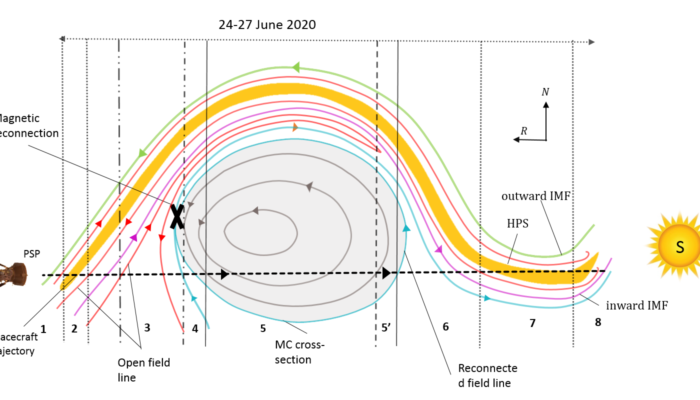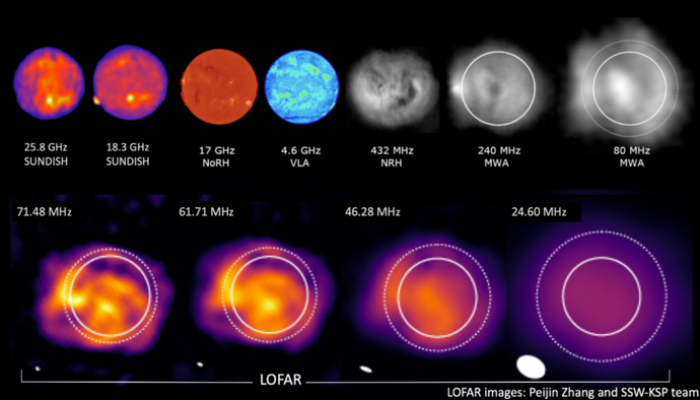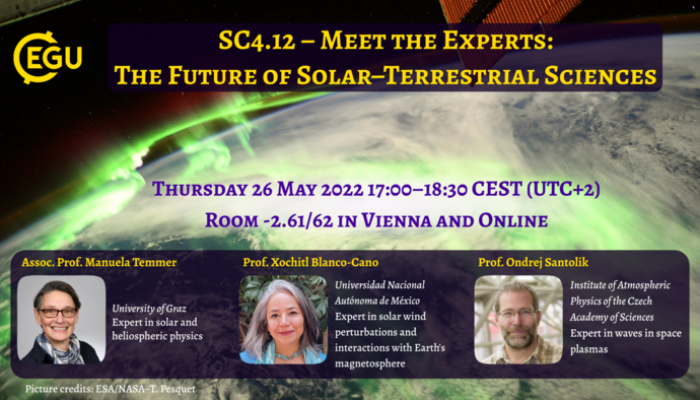In Heliophysics there is a scarcity of in-situ buoys that allows us to monitor and track the solar wind changes in our Sun’s atmosphere, the heliosphere. NASA’s Parker Solar Probe (PSP) mission is one of those buoys that, together with Solar Orbiter (SolO, ESA/NASA Collaboration), is bringing a breath of fresh air in the effort to fully characterize the solar wind and study the evolution of the em ...[Read More]
Resolving the very fine details of the Sun in low frequency radio
The Sun is an active radio emitter, it produces radio emissions in a wide frequency range from kHz to THz. The solar atmosphere has a complex distribution of magnetic field, plasma density, and temperature. These different properties of the solar atmosphere will result in different radio emission features at different frequencies. In principle, the plasma density decreases with the heliocentric di ...[Read More]
Initiation and Heliospheric Evolution of a stealthy solar eruption

In the early 1970s, when Coronal mass ejections (CMEs), massive eruptions of magnetized solar plasma into interplanetary space, were first discovered, they were assumed to be always associated with the energetic solar phenomenon like solar flares, prominences, etc. With improved coronagraphic and multi-wavelength observational instruments, a class of CMEs emerging from the streamers was found and ...[Read More]
Events organised by the ST ECS Team during EGU22
Not long until we all gather again virtually or in-person for the EGU 2022 General Assembly, and the Solar-Terrestrial physics (ST) Division’s Early-Career Scientists (ECS) Team is organising several events, which you might want to add to your personal programme! SC4.12 – Meet the Experts: The Future of Solar–Terrestrial Sciences Thursday, 26 May, 17:00–18:00 CEST (UTC+2)Hybrid format: room -2.61 ...[Read More]


